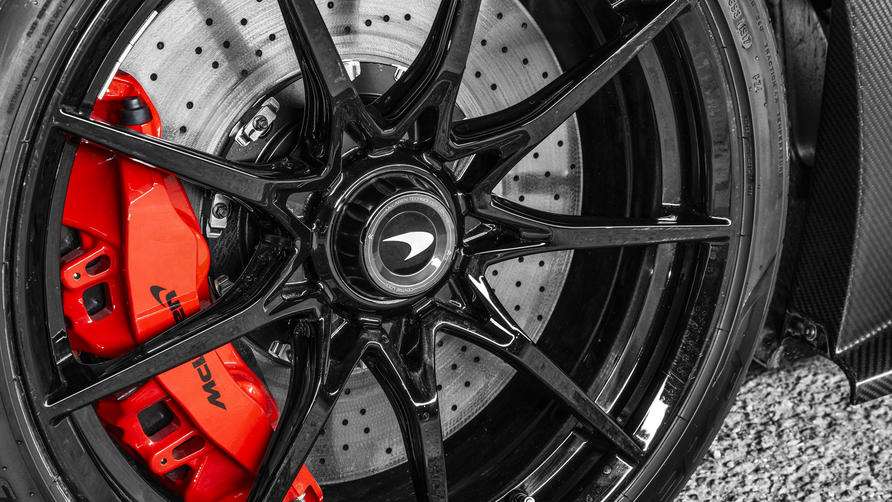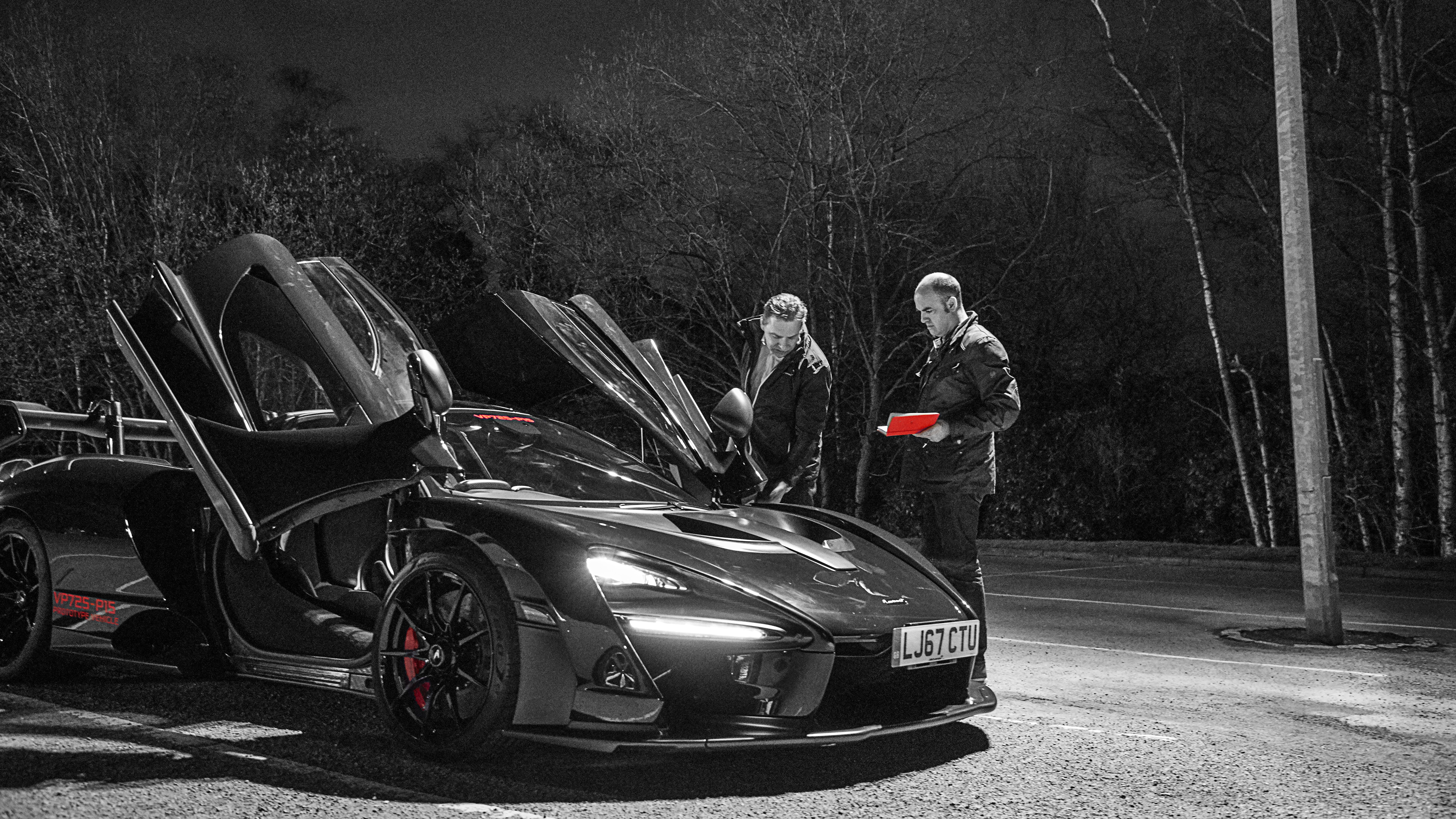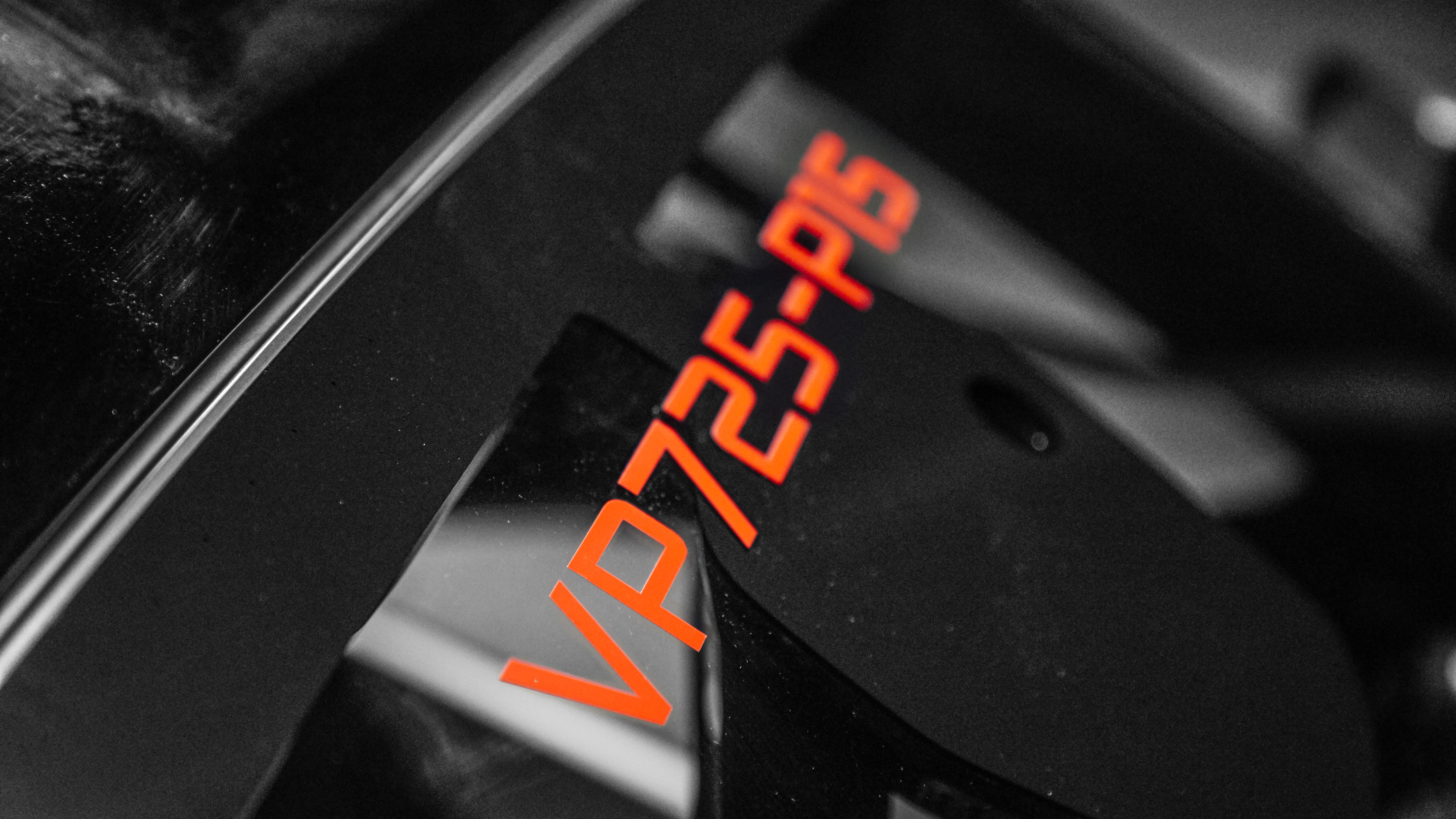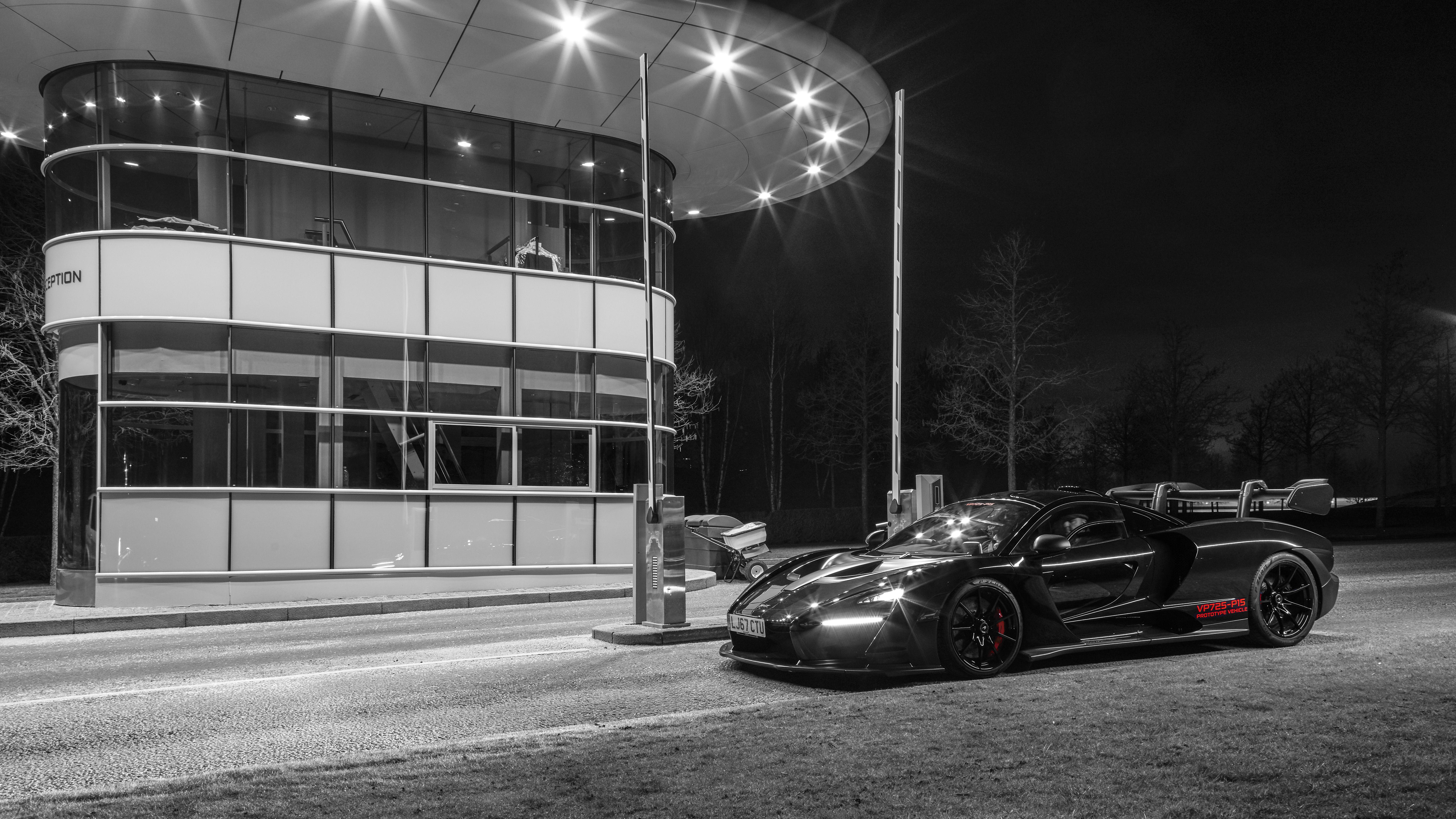
Shaking down the McLaren Senna
Under cover of darkness, the Senna is being taught some road manners. By us...
There’s a malevolence to VP725-P15, the black-on-black McLaren Senna prototype. It sits like a brooding black hole at the edge of the lake outside the McLaren Technology Centre, its extreme aero visually suckering it to the ground, protecting it against the cold wind whipping off the water on this freezing March night. Tonight, like most nights of late, VP725-P15 will be slipping into the darkness on a stealth development mission as the Ultimate Series team finesses its final performance parameters before the sign-off drive and then production starting in earnest.
Normally this is a solitary process conducted in the wee small hours so as to go unnoticed. Tonight, however, Andy Palmer, Ultimate Series vehicle line director and the man responsible for making the Senna live up to the legend of its name, is going to have his peace and quiet disturbed by me. Riding shotgun. But before we head out, time for a quick Senna recap.
Words: Charlie Turner // Photography: John Wycherley
The Senna is the second in McLaren’s Ultimate Series after the P1. It is described by Woking as “McLaren’s DNA at its most extreme. A track car without compromise, legalised for the road but not sanitised to suit it. Nothing else matters but to deliver the most intense driving experience around a circuit.” You get the picture, and the headline statistics back up the pitch. The Senna features the same 4.0-litre twin-turbo V8 used across the range, but in this configuration it delivers 789bhp and 590lb ft of torque, punching the car from 0–62 in 2.8 seconds (0–124 in 6.8 and 0–186 in 17.5, in case you were wondering). Unashamedly designed around the form-follows-function mantra, the brutal styling and outlandish rear wing deliver 800kg of downforce to keep the Senna on the surface of any track – necessary as, with a dry weight of 1,200kg, the Senna is the lightest McLaren road car since the F1.
A visit to the Ultimate Series production line confirms the extremity of this weight-reduction programme. We arrive as they’re fitting the driver’s door, which weighs 9kg – half the weight of a door on a 720S. The one-piece carbon shell seat frames weigh 3kg each, the rear wing weighs 4.89kg and creates 500kg of downforce, the bodywork, which hugs the car like cling film is, in places, only 1mm thick, making huge sections featherweight – the whole rear 3/4 panel weighs in at 2.87kg. The windscreen and glass roof and door panels are made from Gorilla Glass, the lightest, toughest glass on the planet. The list goes on… I could spend all evening just poring through the details, but there’s ‘work’ to be done.

Opening the passenger door, I drop into the lightweight seat – it’s solid, but the sprinkling of strategically placed foam pads make it surprisingly comfortable and supportive. Palmer inserts himself into the driver seat and adjusts it and the steering column. He prods the roof-mounted starter button and the Senna springs to life with the familiar burble of the McLaren V8. He drops the side half-window (a nod to the F1’s split windows), selects a gear and we’re off around the lake setting a personal best of 55mph – Ron would be spinning. We exit the Teletubby-manicured precision of the MTC, pass the glowing McLaren logo and head into the night… straight into a traffic jam.
“Seriously, I’ve been driving this test route for years and this has never happened before,” mutters Palmer. Still, it gives us a chance to assess the Senna’s cabin, which is predictably sparse, functional and wrapped in carbon. The visibility is impressive, aided by the narrow A-pillars, Gorilla Glass roof panels and the doors’ see-through lower sections. Our route today, the Chobham Loop, is one used frequently by the development team and features some of the very worst road surfaces the UK has to offer. With the track development work ongoing in Spain, our focus today is on road manners, which seems at odds with a car so expressly focused on its track capabilities. But owners clearly drive their cars to the circuit and inevitably want to show it off to friends, so it has to behave on the roads as well.
As the traffic clears, I ask how often he’s out testing.
“About three or four times a week; I really encourage everybody on the team to get out and drive the cars... I really encourage that. ‘When was the last time you were out in a car? Why aren’t you driving one this weekend? Why aren’t you driving one tonight? Take it, go shopping in it, live with it. Fill it up with fuel. Experience that car like a customer would.’”
Our brief tonight is to see if the latest tweaks to the damping and steering are heading in the right direction, while also feeding back on any NVH issues. Given the stripped-out focus of the Senna and the loss of a lot of the sound deadening in the interest of saving weight, there’s always a risk that it could be unbearable on the road. But as we thread our way over some of Surrey’s most broken road surfaces, the Senna delivers an unexpected level of solidity and, in Normal mode, the damping soaks up the majority of the road disturbance with impressive pliancy. So far, so good. The lack of sound deadening between you and the V8 brings the motor into the heart of proceedings and you’re more greatly aware of the complex mechanical movements taking place behind you, all of which adds drama to proceedings. “Did you hear that? There’s a little tiz there,” comments Palmer, referring to a frequency that most wouldn’t have noticed and adding a mental note to add it to the feedback.

After a few miles, Palmer switches the active panel to Sport and the Senna tightens its sinews. The whole car becomes busier on the broken road surface and delivers what looks like increased feedback through the steering. When the road opens out, Palmer accelerates hard. As the revs build, the mechanical noise of the engine is overpowered by the exhaust note as the Senna works harder and the revs increase. The bespoke Inconel and titanium exhaust has been engineered to build by 10dB every 2,000rpm to encourage you to seek out the red line – it’s impressive. But tonight is about finessing the details, not dipping into the outer edges of performance, so, after a brief spike of adrenaline, we’re back into Normal setting and letting the auto ’box shift for us (on light throttle it’s too keen to upshift early – another note in the feedback form). We continue, checking the headlight throw, reassessing the differentiation between Normal and Sport, noting the way the Senna settles after hitting an expansion joint... The list goes on, and all the time Palmer is processing, noting, benchmarking against the previous settings. This will all be fed back to the team and changes made before the car heads out again the following evening in the ongoing process of developing a car worthy of the great man’s name.
Top Gear
Newsletter
Thank you for subscribing to our newsletter. Look out for your regular round-up of news, reviews and offers in your inbox.
Get all the latest news, reviews and exclusives, direct to your inbox.
All too soon we drive back to the MTC, park the Senna and head to the local curry house to debrief. Later this month, the Senna will be signed off by a ‘jury’ of six McLaren head honchos including Palmer, McLaren CEO Mike Flewitt, Indy legend Kenny Bräck (whose 214g Indy car accident is still a world record) who now does development work for McLaren, and other key representatives of the McLaren leadership team. Before then, the fettling, finessing and optimising will continue.
Our brief access to the finishing stages of the development process has given us a fascinating insight into the obsessive attention to detail and constant process of evolution involved in creating a car that will, I have absolutely no doubt, redefine our understanding of performance... and I can’t wait to try the finished product. For now, though, we have to hand the process back to Andy and his admirably obsessive Ultimate Series team, safe in the knowledge that, as we sleep, a stealth-black Senna will be puncturing the midnight silence of a quiet area of Surrey in the relentless pursuit of performance.
Trending this week
- Car Review
BMW 1 Series
- Top Gear's Top 9
Nine dreadful bits of 'homeware' made by carmakers











